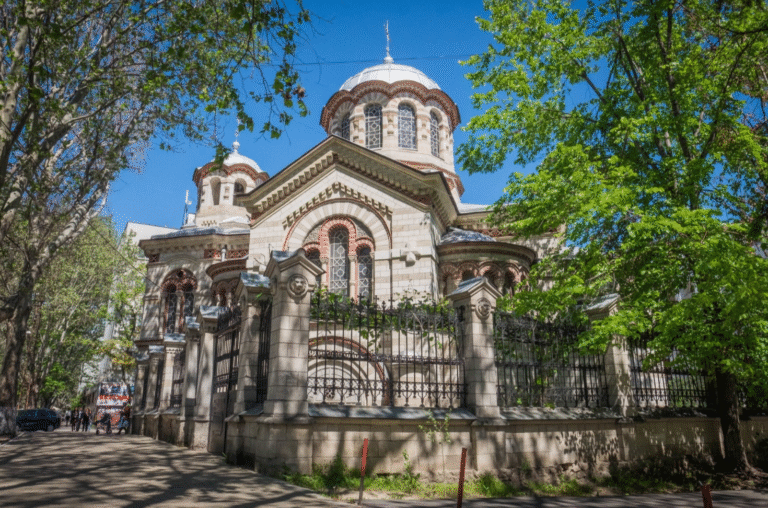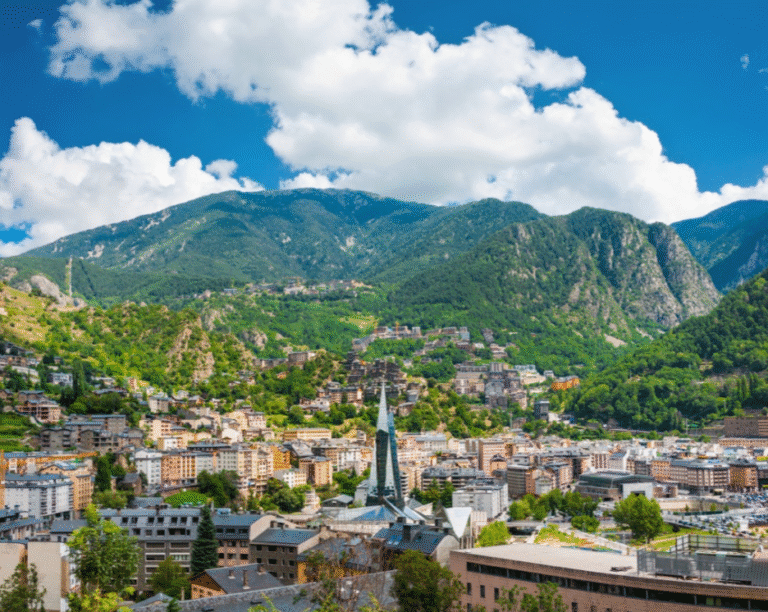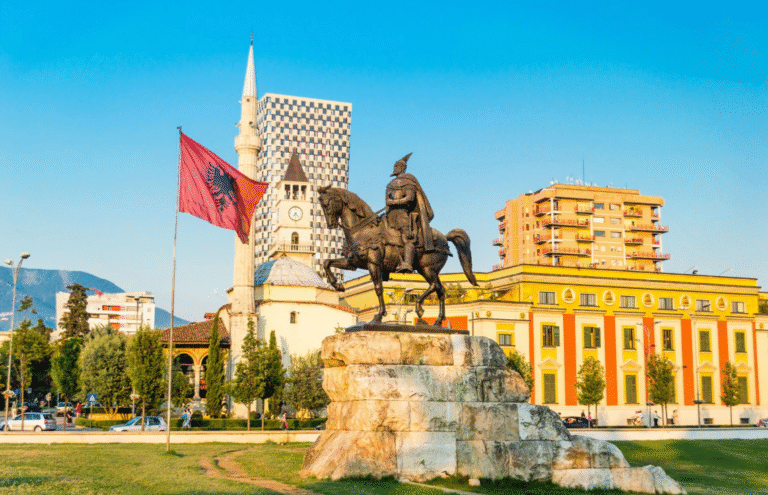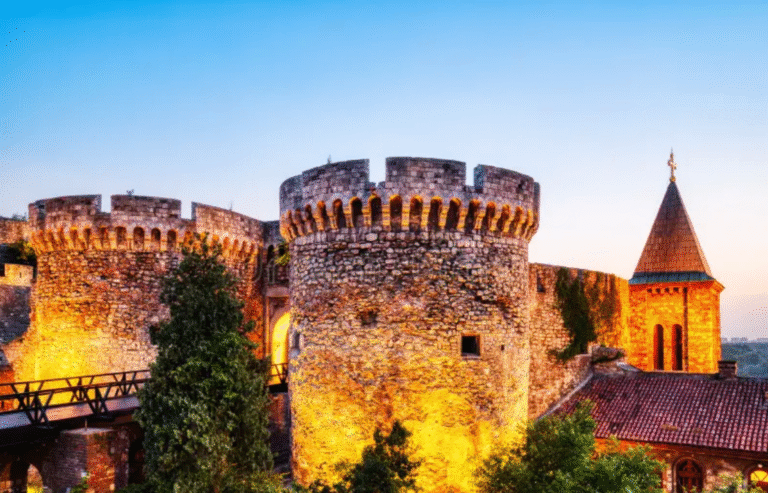Skopje’s Statues and Stories: Discovering Macedonia’s Unique Capital
Skopje, the capital of North Macedonia, is a city unlike any other in the Balkans. It is a place where ancient history meets bold modernity, where Ottoman bazaars exist alongside massive neoclassical facades, and where an astonishing number of statues tell the story of the city’s evolving identity. Skopje is a city of reinvention, having endured earthquakes, foreign rule, and political shifts, yet it continues to reshape itself while preserving its deep-rooted traditions. Whether exploring its sprawling Old Bazaar, crossing the iconic Stone Bridge, or wandering through the controversial yet fascinating Skopje 2014 project, visitors to the city will find themselves immersed in an unexpected mix of the past and the future. With its lively café culture, scenic riverfront, and diverse cultural influences, Skopje offers an experience that is as complex as it is captivating.
A City of Contrasts: Ancient Ruins, Ottoman Legacies, and Neoclassical Ambitions
Skopje’s history stretches back thousands of years, with evidence of Roman, Byzantine, and Ottoman influence found throughout the city. One of its most enduring symbols is the Stone Bridge, which spans the Vardar River and connects the city’s historical and modern halves. Built during the reign of the Ottoman Empire in the 15th century, this bridge has witnessed centuries of change and remains a central point for both locals and visitors.
On one side of the bridge lies the Old Bazaar, one of the largest and best-preserved marketplaces in the Balkans. Dating back to the Ottoman period, the bazaar is a labyrinth of narrow streets filled with mosques, traditional shops, and teahouses where merchants have traded for centuries. The Mustafa Pasha Mosque, an elegant example of Ottoman architecture, dominates the skyline with its slender minaret and peaceful courtyard. Nearby, the Daut Pasha Hamam, once a grand bathhouse, now serves as an art gallery, blending history with contemporary creativity.
Across the bridge, Skopje’s transformation becomes evident. The Macedonia Square, the city’s main plaza, is surrounded by colossal neoclassical buildings and dominated by the imposing statue of Alexander the Great on horseback. Officially named “Warrior on a Horse,” this massive monument is part of the controversial Skopje 2014 project, an ambitious effort to rebrand the city with grandiose historical and nationalistic symbols. While the project has been met with both admiration and criticism, it undeniably gives Skopje a distinctive visual identity.
Among the newer additions to the cityscape is the Archaeological Museum of North Macedonia, housed in a grand neoclassical structure along the river. Inside, visitors can explore artifacts dating back to ancient Macedonian, Roman, and Byzantine times, providing a deeper understanding of the region’s rich heritage. Meanwhile, remnants of Skopje’s Roman past can be seen in the ruins of Scupi, an ancient settlement just outside the city, offering a glimpse into Macedonia’s early civilizations.
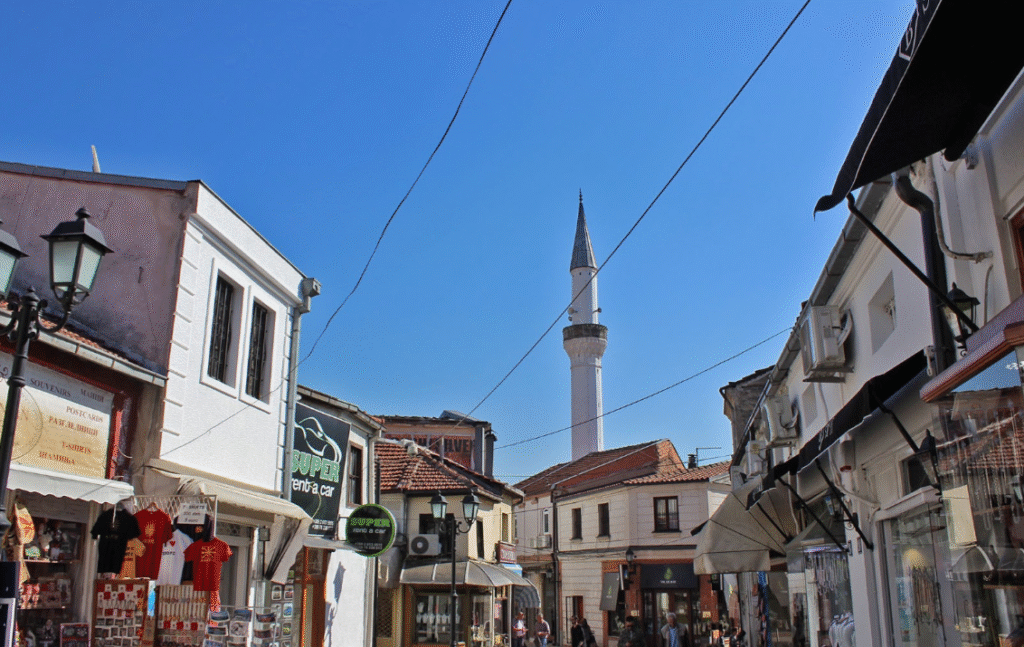
The Earthquake That Shaped Skopje: A City Rebuilt
Skopje’s modern appearance is largely shaped by the devastating earthquake of 1963, which reduced much of the city to rubble. In response, an ambitious rebuilding effort was led by renowned Japanese architect Kenzo Tange, who introduced a bold vision of Brutalist architecture. Today, some of these distinctive concrete structures remain as reminders of the city’s resilience and the futuristic aspirations of the socialist era.
One of the most striking examples of this Brutalist legacy is the Skopje Railway Station, which was left partially destroyed after the earthquake. The remaining section now serves as the Museum of the City of Skopje, displaying exhibits on the earthquake and the city’s reconstruction. The station’s frozen clock, stopped at the exact time of the disaster—5:17 AM—stands as a solemn tribute to the lives lost and the city’s rebirth.
Another Brutalist landmark is the towering Telekomunikaciska Zgrada, a massive concrete structure that was once a symbol of socialist modernity. Though controversial in design, these buildings are now an integral part of Skopje’s identity, attracting those fascinated by post-war architecture and urban resilience.
Amidst the city’s reconstructed streets, Mother Teresa’s Memorial House stands as a place of reflection and homage to one of Skopje’s most famous figures. Born in the city in 1910, Mother Teresa remains an important symbol of compassion and humanitarian work. The memorial, built near her birthplace, features exhibitions on her life and legacy, offering visitors insight into the woman who devoted herself to helping the world’s most vulnerable.
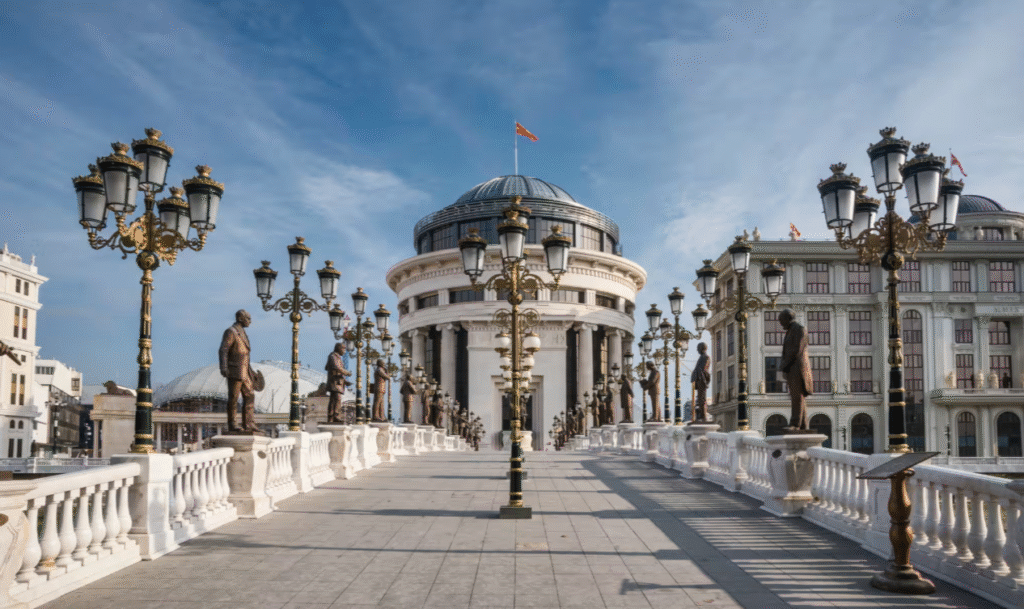
The Riverside and Green Escapes: Skopje’s Natural Side
Beyond its historic and architectural contrasts, Skopje is blessed with beautiful natural surroundings. The Vardar River serves as the city’s central artery, with pedestrian-friendly promenades lined with cafés, street performers, and an ever-growing collection of statues. A walk along the riverbank reveals the city’s evolving identity, with modern bridges adorned with sculptures and artistic installations connecting both sides of the city.
For those looking to escape the urban hustle, Mount Vodno provides a quick and scenic retreat just outside the city center. A cable car ride to the summit offers breathtaking views over Skopje, while the towering Millennium Cross—a 66-meter-high structure—stands as one of the tallest Christian crosses in the world. Hiking trails wind through the mountain’s forests, making it a favorite destination for outdoor enthusiasts and those seeking fresh air just minutes from the city.
Further afield, Matka Canyon is one of North Macedonia’s most stunning natural wonders. Just a short drive from Skopje, this rugged canyon is home to deep emerald waters, hidden caves, and medieval monasteries perched on rocky cliffs. Visitors can kayak along the river, explore the caves of Vrelo (one of the deepest underwater caves in the world), or simply relax in one of the riverside cafés surrounded by breathtaking scenery.
Skopje’s dedication to green spaces is also evident within the city. The expansive City Park provides a tranquil oasis with tree-lined pathways, lakes, and open spaces for leisure and relaxation. In summer, the park hosts concerts and festivals, bringing together locals and visitors in a celebration of music and culture.
Skopje is a city that defies expectations. It is a place where Ottoman bazaars coexist with neoclassical monuments, where Brutalist structures rise alongside medieval fortresses, and where statues outnumber people in some areas. Despite its past struggles, Skopje embraces its diverse history and continues to reinvent itself, blending tradition with ambition. Whether exploring its historic streets, engaging in its café culture, or venturing into its stunning natural surroundings, visitors will find a city full of stories waiting to be uncovered. In a region often overshadowed by its more famous neighbors, Skopje stands as a reminder that every city has its own unique tale to tell—one of resilience, transformation, and the enduring spirit of its people.

